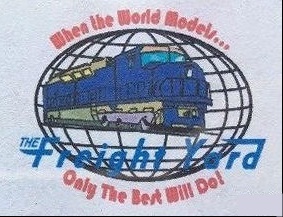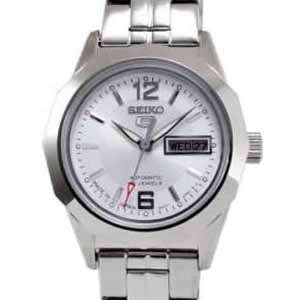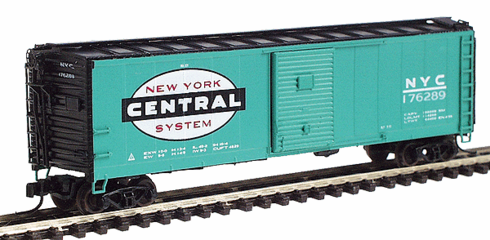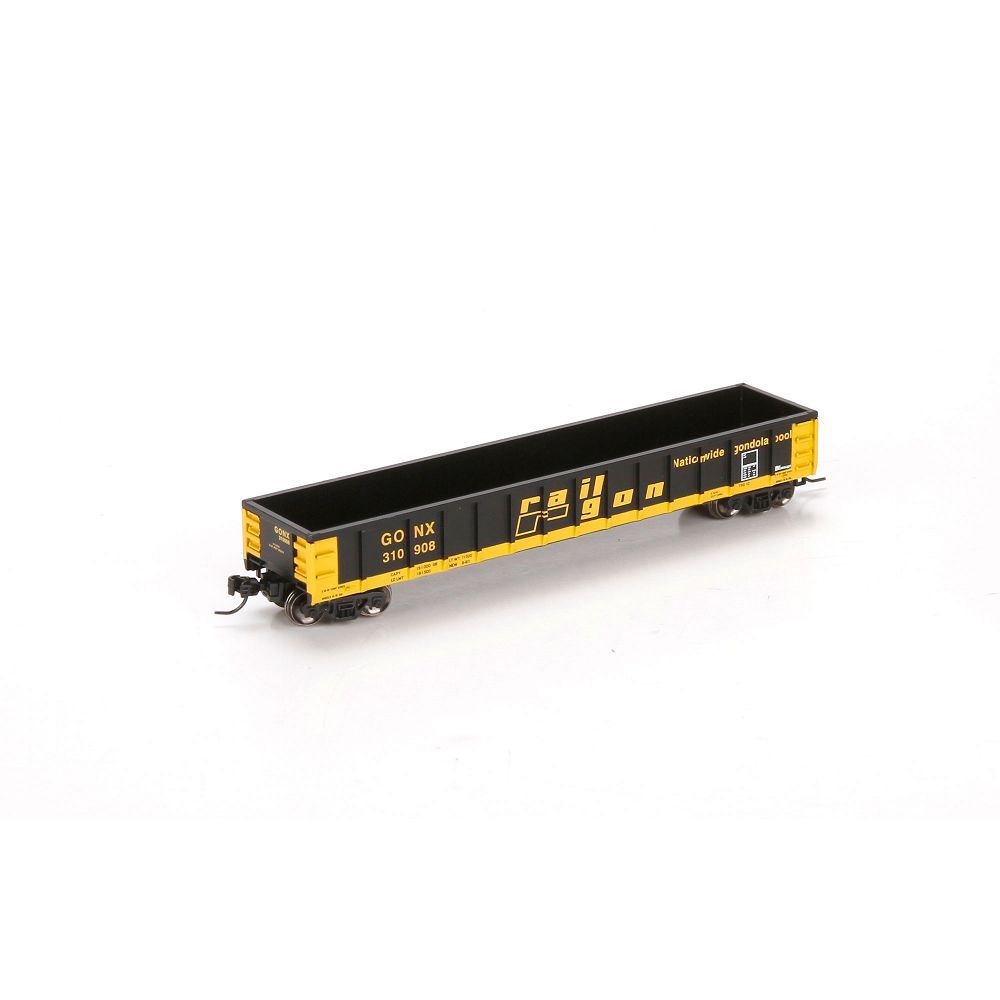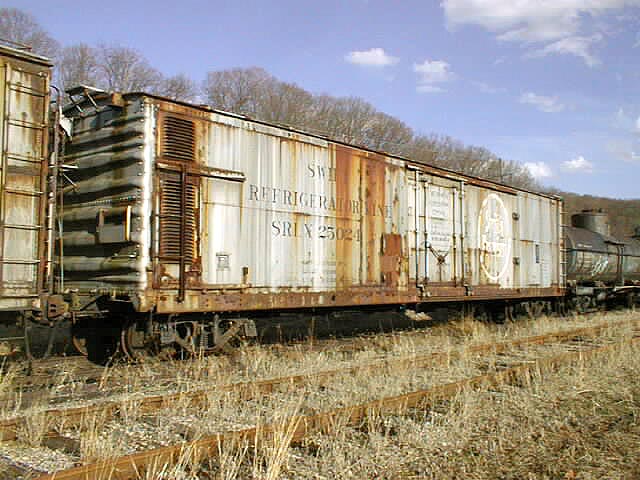Prototype History: The purpose of a mechanical reefer is to keep perishable items cold. Early reefers were of all wood construction and used ice for cooling. By the 1940s, new reefers were being built entirely of steel. Insulating techniques improved to the point where economical refrigeration could be accomplished using steel side plates in place of wood sheathing. Fifty foot mechanical reefers date back to at least the late 50s / early 60s.
The mechanical reefers could keep a more regular temperature, and often times colder than what the ice bunker cars were capable of. Initially mechanical reefers were used primarily in frozen food service. This would soon change as mechanical refrigeration began to replace ice-based systems. Soon after, mechanical refrigeration units replaced the “armies” of personnel required to re-ice the cars.
The mechanical reefers could keep a more regular temperature, and often times colder than what the ice bunker cars were capable of. Initially mechanical reefers were used primarily in frozen food service. This would soon change as mechanical refrigeration began to replace ice-based systems. Soon after, mechanical refrigeration units replaced the “armies” of personnel required to re-ice the cars.
Road Name History: 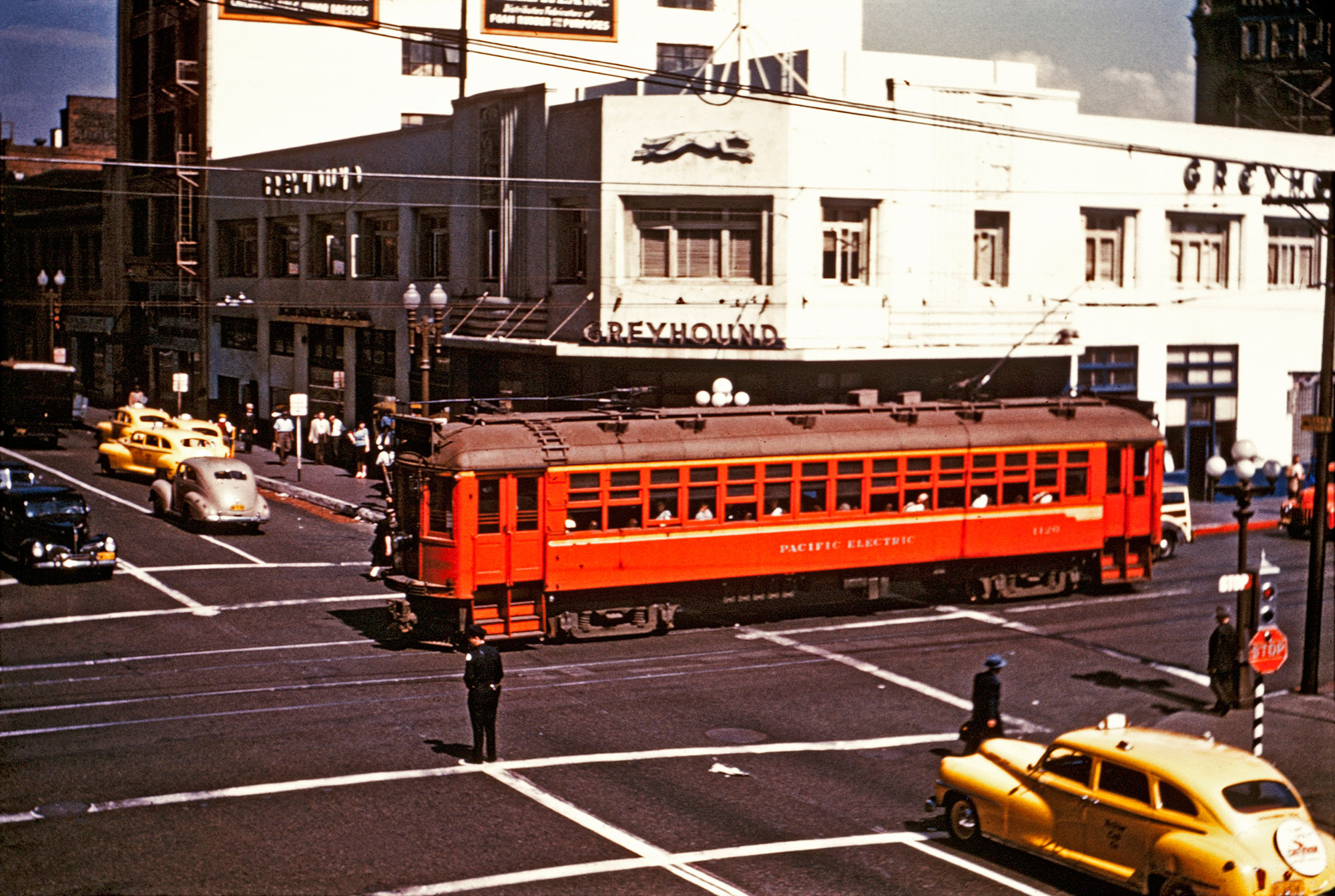 The PE was established in 1901 and built an electric interurban line between Los Angeles and Long Beach, California. With this first line completed in 1902, the PE began building outward in every direction. This caught the attention of Southern Pacific who at first attempted to obstruct the PE’s expansion and then bought a 45% stake in the company. Henry Huntington, PE’s founder, then established a new company, the Los Angeles Inter-Urban Railway and resumed his expansion under that flag – outside of the influence of the SP. By 1908, LAI-U had grown larger than PE but Huntington had come to a truce with Southern Pacific. He leased the LAI-U to Pacific Electric and over the next few years sold control of his various traction lines in the state to SP. In 1911, the PE, LAI-U, Los Angeles Pacific and a handful of smaller lines were combined into a greater Pacific Electric.
The PE was established in 1901 and built an electric interurban line between Los Angeles and Long Beach, California. With this first line completed in 1902, the PE began building outward in every direction. This caught the attention of Southern Pacific who at first attempted to obstruct the PE’s expansion and then bought a 45% stake in the company. Henry Huntington, PE’s founder, then established a new company, the Los Angeles Inter-Urban Railway and resumed his expansion under that flag – outside of the influence of the SP. By 1908, LAI-U had grown larger than PE but Huntington had come to a truce with Southern Pacific. He leased the LAI-U to Pacific Electric and over the next few years sold control of his various traction lines in the state to SP. In 1911, the PE, LAI-U, Los Angeles Pacific and a handful of smaller lines were combined into a greater Pacific Electric.
The new PE blanketed Southern California from San Fernando and Pasadena to the north, Santa Monica, Redondo Beach, San Pedro, Long Beach, Huntington Beach and Balboa along the coast to as far east as Redlands. With 575 miles of line, they were the largest electric railway in the world at the time of the consolidation.
Near the end of the Second World War, PE rostered 483 electric passenger cars ranging from small street cars to large interurban cars, 41 box motors for package freight, a trio of RPO-Express cars, and for heavy freight service 44 electric freight motors, 19 steam locomotives, and 6 diesels (some of which were equipped with trolley poles to trigger PE’s signal system.)
As the popularity of the automobile increased, PE began abandoning lines. In a few cases, lines that were making money were forced into abandonment to make room for new highways. In 1953, the remaining passenger service was sold to Metropolitan Coach Lines. PE continued on as a freight railroad. The freight operations were gradually dieselized with power leased from SP with the last electric freight motor switching customers along Santa Monica Boulevard in January of 1958. In 1965, Pacific Electric Railway was finally merged into parent Southern Pacific.

The new PE blanketed Southern California from San Fernando and Pasadena to the north, Santa Monica, Redondo Beach, San Pedro, Long Beach, Huntington Beach and Balboa along the coast to as far east as Redlands. With 575 miles of line, they were the largest electric railway in the world at the time of the consolidation.
Near the end of the Second World War, PE rostered 483 electric passenger cars ranging from small street cars to large interurban cars, 41 box motors for package freight, a trio of RPO-Express cars, and for heavy freight service 44 electric freight motors, 19 steam locomotives, and 6 diesels (some of which were equipped with trolley poles to trigger PE’s signal system.)
As the popularity of the automobile increased, PE began abandoning lines. In a few cases, lines that were making money were forced into abandonment to make room for new highways. In 1953, the remaining passenger service was sold to Metropolitan Coach Lines. PE continued on as a freight railroad. The freight operations were gradually dieselized with power leased from SP with the last electric freight motor switching customers along Santa Monica Boulevard in January of 1958. In 1965, Pacific Electric Railway was finally merged into parent Southern Pacific.
Brand/Importer Information: The Freight Yard was a hobby shop that did custom decoration and special runs of other manufacturers' N Scale products. It sold its custom products under several brands or collections: Premiere Editions, by The Freight Yard and Dreams Design.
It was located in Anaheim, California and then moved to 2006 in Phoenix, Arizona.
Established in the late 1980s, it stopped business under this name by the end of the 2000s.
The Freight Yard was owned and operated by Darren J. Cohen. Darren is now operating North Valley Trains.
The Freight Yard / Premiere Editions runs are usually available in series of two to twelve different numbers (suffixed A to M, with I not used).
The first two digits of the stock number correspond to the release year (9x being 199x, and 2x being 200x).
It was located in Anaheim, California and then moved to 2006 in Phoenix, Arizona.
Established in the late 1980s, it stopped business under this name by the end of the 2000s.
The Freight Yard was owned and operated by Darren J. Cohen. Darren is now operating North Valley Trains.
The Freight Yard / Premiere Editions runs are usually available in series of two to twelve different numbers (suffixed A to M, with I not used).
The first two digits of the stock number correspond to the release year (9x being 199x, and 2x being 200x).
Manufacturer Information:  Micro-Trains Line split off from Kadee Quality Products in 1990. Kadee Quality Products originally got involved in N-Scale by producing a scaled-down version of their successful HO Magne-Matic knuckle coupler system. This coupler was superior to the ubiquitous 'Rapido' style coupler due to two primary factors: superior realistic appearance and the ability to automatically uncouple when stopped over a magnet embedded in a section of track. The success of these couplers in N-Scale quickly translated to the production of trucks, wheels and in 1972 a release of ready-to-run box cars.
Micro-Trains Line split off from Kadee Quality Products in 1990. Kadee Quality Products originally got involved in N-Scale by producing a scaled-down version of their successful HO Magne-Matic knuckle coupler system. This coupler was superior to the ubiquitous 'Rapido' style coupler due to two primary factors: superior realistic appearance and the ability to automatically uncouple when stopped over a magnet embedded in a section of track. The success of these couplers in N-Scale quickly translated to the production of trucks, wheels and in 1972 a release of ready-to-run box cars.
Micro-Trains Line Co. split off from Kadee in 1990 to form a completely independent company. For this reason, products from this company can appear with labels from both enterprises. Due to the nature of production idiosyncrasies and various random factors, the rolling stock from Micro-Trains can have all sorts of interesting variations in both their packaging as well as the products themselves. When acquiring an MTL product it is very important to understand these important production variations that can greatly enhance (or decrease) the value of your purchase.
Please consult our Micro-Trains Collector's Guide

Micro-Trains Line Co. split off from Kadee in 1990 to form a completely independent company. For this reason, products from this company can appear with labels from both enterprises. Due to the nature of production idiosyncrasies and various random factors, the rolling stock from Micro-Trains can have all sorts of interesting variations in both their packaging as well as the products themselves. When acquiring an MTL product it is very important to understand these important production variations that can greatly enhance (or decrease) the value of your purchase.
Please consult our Micro-Trains Collector's Guide
Item created by: Alain LM on 2022-04-17 02:58:04
If you see errors or missing data in this entry, please feel free to log in and edit it. Anyone with a Gmail account can log in instantly.
If you see errors or missing data in this entry, please feel free to log in and edit it. Anyone with a Gmail account can log in instantly.




